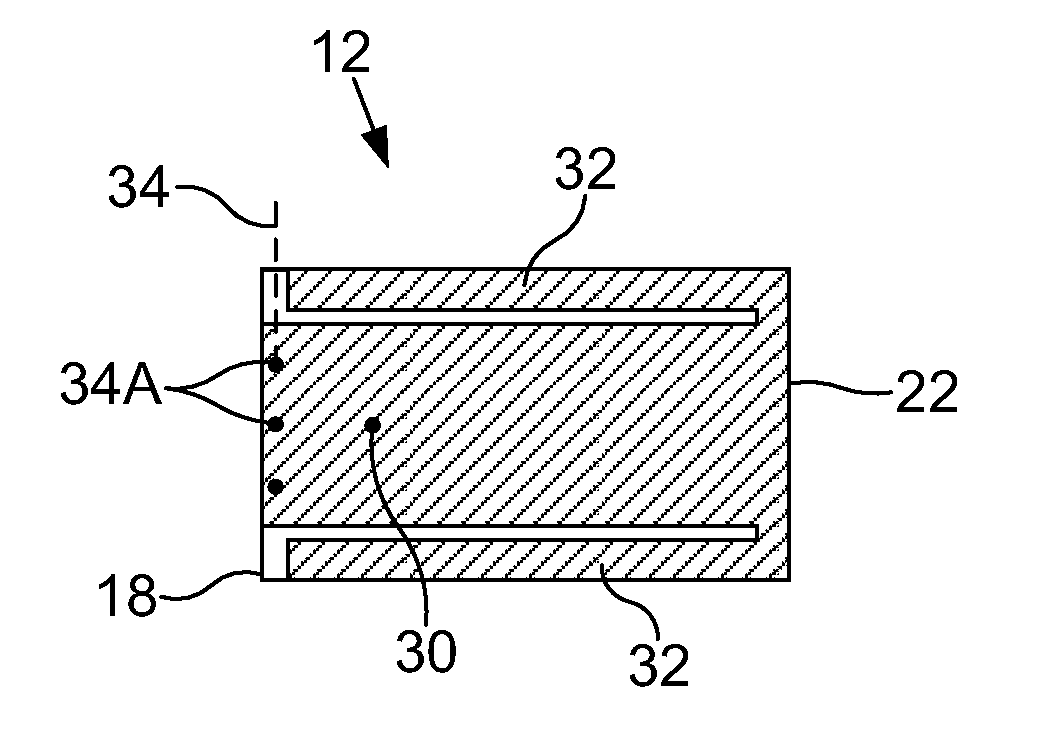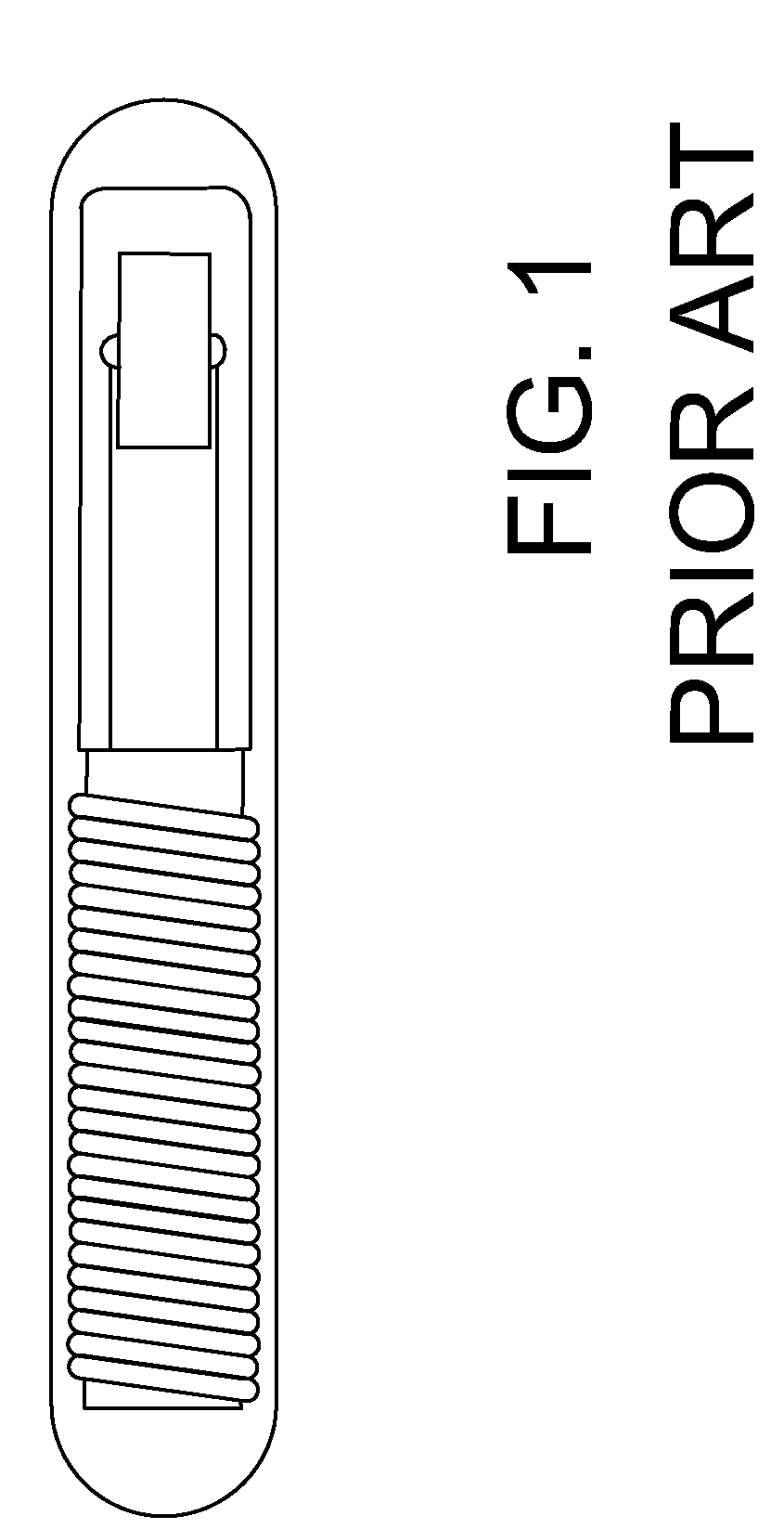Small gamma shielded shorted patch RFID tag
a shorted patch and small gamma shielding technology, applied in the field of rfid tags, can solve the problems of extreme radio frequency degradation and detuning, inability to communicate with a surgically implanted device, and inability to reliably communicate with a storage case or a set of surgical tools, etc., to facilitate the drastic miniaturization and high efficiency operation of the device, the effect of low loss of tangent material
- Summary
- Abstract
- Description
- Claims
- Application Information
AI Technical Summary
Benefits of technology
Problems solved by technology
Method used
Image
Examples
Embodiment Construction
[0023]Referring now to the drawings, and more particularly to FIGS. 2-11, there is shown an embodiment of an RFID tag (transponder) 10 of the present invention, which generally includes a circuit board assembly 12, backplane 14 and overmolded housing 16.
[0024]Circuit board assembly 12 includes a circuit board 18, an RFID circuit 20, an antenna 22, and a metallic ground plane 24. Circuit board or substrate 18 has a first side 26 and a second side 28. Circuit board 18 carries antenna 22 on first side 26. Circuit board 18 carries RFID circuit 20 and ground plane 24 on second side 28.
[0025]Circuit board or substrate 18 may be constructed from a material with a high dielectric constant of greater than approximately 4. A substrate material that has a high dielectric constant such as a ceramic filled polytetraflouroethylene (PTFE) or metal oxide ceramic provides good strength, easy processing and a low thermal coefficient of expansion. The high dielectric material permits further miniaturi...
PUM
 Login to View More
Login to View More Abstract
Description
Claims
Application Information
 Login to View More
Login to View More - R&D
- Intellectual Property
- Life Sciences
- Materials
- Tech Scout
- Unparalleled Data Quality
- Higher Quality Content
- 60% Fewer Hallucinations
Browse by: Latest US Patents, China's latest patents, Technical Efficacy Thesaurus, Application Domain, Technology Topic, Popular Technical Reports.
© 2025 PatSnap. All rights reserved.Legal|Privacy policy|Modern Slavery Act Transparency Statement|Sitemap|About US| Contact US: help@patsnap.com



